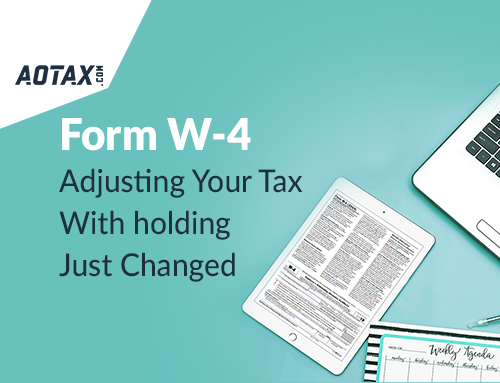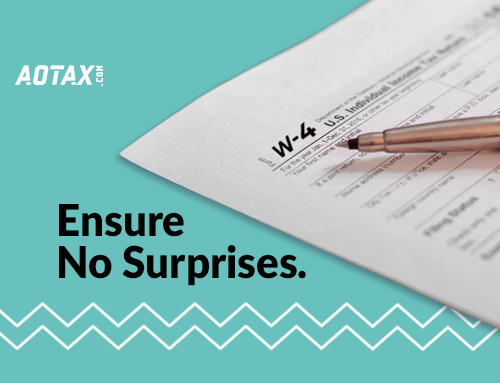
How to Fill Out W-4 Tax Withholding Form in 2022
W-4 is a form issued by the Internal Revenue Services (IRS), and employees use it to tell employers the amount of tax to withhold from each paycheck. Previously known as “Employee’s Withholding Certificate,” all employers use the W-4 form extensively to remit taxes on behalf of the employees to the IRS. However, some changes were introduced in 2020, which are essential to note.
The W-4 form needs to be filled out if you switch jobs and have a new employer. You also need to fill it out if you want to adjust your current withholdings. However, if you already have an existing W-4 form with the current employer, you need not fill it out again.
Filling the W-4 Tax Withholding Form for 2022
The W-4 form holds considerable power to make your taxation journey better and save money. Here is a look at what it is used for and how to fill it:
Why Should You Fill out a Form W-4?
For most, it is essential to fill out Form W-4 for 2022 to avoid being slammed with a large tax bill or a giant refund while filing tax returns in 2023. Saving on colossal tax bills could enable a more productive and profitable investment of the same money or invest in other essential expenses during the year by simply filling out a W-4 form.
Although it is not mandatory to update your withholdings every year, the IRS strongly recommends revisiting the W-4 form each year to add in any extra allowances.
What Changed in the Form W-4?
Here are some of the critical changes in effect for the new and updated Form W-4:
Name of the form
Form W-4 was initially known as ‘Employee’s Withholding Allowance Certificate. However, Form W-4 no longer calculated allowances from 2020, which led the title of W-4 to be shortened to ‘Employee’s Withholding Certificate.’
Personal allowances worksheet
A taxpayer could initially lower their federal income tax through W-4 by factoring in personal exemptions. Their exemptions allowed for deductions against a taxpayer’s income, reducing their taxable income. These exemptions were tied to allowances. As personal exemptions are now gone, there is no need to determine the number of allowances.
Personal Allowance Worksheet from page ‘3’ of the old W-4 form is eliminated.
How to fill out a W-4 form
You can access the W-4 form through the IRS website. Here is a step-by-step guide into how to fill out the W-4 form:
Step 1: Enter personal information

This section requires you to enter details about your basic information such as:
- Name
- Address
- Social security number
- City/town, state
- ZIP code
- Filing status
Step 2: Multiple jobs
This step is useful for people who have multiple jobs or are married, filing jointly, or people whose spouses are also working.
It is also an essential and useful part for people whose financial situations depict withholding more or less than the standard amount. For example, some of the factors recorded here are income from freelancing contracts, a second job, or a spouse’s income.
Step 3: Claim dependents
Your eligibility for the child tax credit gets determined through this section. Taxpayers with a total income of $2,00,000 or less will be eligible for the tax credit. If the taxpayers are married and filing jointly, this limit is increased to $4,00,000. In that case, you can simply mention how many kids and dependents you have and multiply them by credit.
Step 4: Adjusting the holdings
This is an optional section that helps you to indicate other reasons to withhold more or less from your paycheck. Some of the parts that are included here are:
Other income (not from jobs): This could be dividend or retirement income, basically any income that may not be subject to withholding.
Deductions: Itemised deductions like charitable contributions or mortgage interest includes items that will exceed your standard deduction.
Extra withholding: Any extra withholding you want to withhold each pay period.
There could be several reasons to refine your withholdings and reflect the adjustments in the W-4.
Step 5: Signature

Signing the form is very important as it will render it invalid if the sign is missing.
Should you fill out Form W-4?
Whether you should or not fill out the Form W-4 depends on answering a few questions, like:
- Are you married or single? If married, does your spouse work?
- Do you or your spouse have a second job?
- Do you have any new dependents?
- Is there a chance that you won’t use the standard deduction?
- Did you get a large tax bill or have a large refund last year?
If the answer is ‘Yes’ to any of the above questions, it is good to revisit Form W-4 and fill in the crucial details.At AOTAX, we have helped Indian IT pros file tax returns in the US for over 15 plus years. By generating your Tax Returns for you, we can relieve you of this stress in a cost-effective manner. To start filing your 2021 tax returns, click here.





Recent Comments